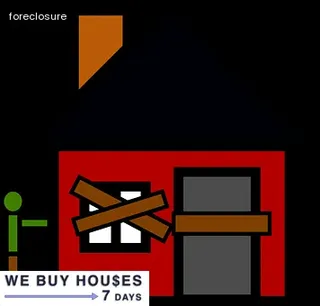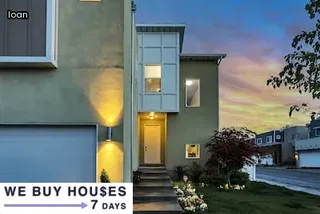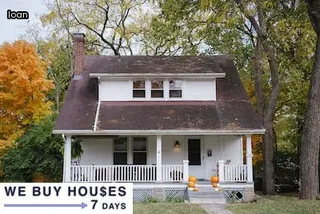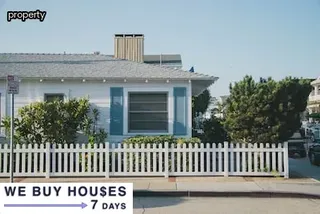Navigating foreclosure in South Dakota can be a daunting task, but understanding the process is key to making informed decisions. Foreclosure in South Dakota is initiated by filing a complaint with the court and serving it on the borrower (defendant).
The borrower then has 20 days to file an answer with the court and notify all parties of their intent to contest the foreclosure. If no answer is filed, the lender may ask for a default judgment, which could result in an entry of sale of the property and foreclosure.
If an answer is filed, a hearing will be set within 30 days from that date. At this hearing, both parties have to present evidence in support of their claims and arguments.
Following the hearing, if both parties do not reach an agreement outside of court, the judge will make a ruling on whether or not foreclosure can proceed. In either case, if foreclosure is granted, notice will be published in two newspapers before any sale occurs.
After this happens, lenders can bid on the property at auction or investors may purchase it directly from them.

Navigating through foreclosure in South Dakota can be a daunting task for homeowners facing financial hardship. To ensure that all parties involved understand the preforeclosure process, it's important to have a comprehensive guide.
Preforeclosure is the stage of the foreclosure process when a homeowner has stopped making mortgage payments and is notified by the lender that they are in default on their loan. The lender will then initiate steps to repossess the home, beginning with sending a notice of default to the homeowner.
This notification includes information on how much is due, what fees are owed and what must be done to reinstate the loan. It also outlines options available to the homeowner such as entering into a forbearance agreement or repayment plan with the lender, or selling the property in a short sale.
If these options are not pursued, then foreclosure proceedings will begin, which could result in loss of equity and damage to credit rating. Understanding preforeclosure is essential for anyone facing this difficult situation as it allows them to make informed decisions about their future and possibly save their home from being repossessed by their lender.
Navigating the foreclosure process in South Dakota can be a daunting task to take on. Knowing the terminology and understanding the laws surrounding foreclosure are essential for anyone who is facing this difficult situation.
The first step in navigating the South Dakota foreclosure process is to understand what it means. Foreclosure is when a lender takes back ownership of a property due to a borrower’s inability to make mortgage payments.
This can happen if you miss two or more payments consecutively, depending on your loan terms. Once you are in default on your mortgage, the lender can file for foreclosure with the courts, which will give them legal rights to evict you from the property.
To avoid this process, it is important to have an experienced attorney who can help you understand your rights and obligations under state law. It may also be beneficial to contact a credit counseling agency or nonprofit organization that provides free advice and assistance with debt management strategies.
Ultimately, while navigating the South Dakota foreclosure process can be challenging, having an understanding of how it works and using available resources can help make it easier to manage and ultimately resolve.

Navigating foreclosure in South Dakota can be a difficult process to understand, but there are several strategies to help you avoid foreclosure. To start, it is important to stay informed and familiarize yourself with the foreclosure process.
You should also attempt to create a budget that accurately reflects your income and expenses, and consider paying more than the minimum amount due on your mortgage each month if possible. Additionally, consulting with a housing counselor may be beneficial and can provide personalized advice for keeping up with mortgage payments.
If necessary, you can also look into loan modifications or other refinancing options that can reduce the monthly payment amount. In some cases, lenders are willing to negotiate repayment plans or offer forbearance agreements which will allow for missed payments without penalty.
Finally, attempting a short sale may be an option if you owe more on your home than it is worth; this allows you to sell your home in order to pay off the debt owed. Following these strategies can help ensure that you do not find yourself facing foreclosure in South Dakota.
Navigating South Dakota foreclosure can be a tricky process, and understanding the deficiency judgment laws in the state is one of the most important steps. In South Dakota, if a lender sells a property at a foreclosure sale and then gets permission from the court to seek payment for any remaining debt after that sale, they may pursue what is known as a deficiency judgment.
This means that they can seek out any unpaid balance to be paid by the borrower, often through wage garnishment or other collection methods. To protect borrowers from excessive debt, South Dakota has put laws in place to limit how much lenders are allowed to pursue through deficiency judgments.
For example, any deficiency judgment amount cannot exceed the difference between the fair market value of the property on the date of sale and the total amount due on the mortgage. Additionally, lenders must provide notice to borrowers before seeking such judgments so that borrowers have an opportunity to dispute this action in court.
It's important for anyone facing foreclosure in South Dakota to understand their rights under these deficiency judgment laws so they can make informed decisions about their financial future.

Missing mortgage payments in South Dakota can have a significant impact on homeowners, especially if foreclosure proceedings are initiated. When facing foreclosure, it is important for South Dakota homeowners to be aware of the potential consequences of failing to make mortgage payments.
These may include repossession of the property and damage to the borrower’s credit score which could prevent them from obtaining additional financing in the future. Additionally, borrowers can incur legal fees and other expenses associated with foreclosure that they would not have been responsible for if they had kept up with their payments.
Furthermore, it is important to note that even after a home has been foreclosed upon, borrowers may still be liable for a deficiency judgement depending on state law. It is thus critical for South Dakota homeowners to understand their rights and obligations under state laws when they are considering whether or not to default on their mortgage payment.
Investigating breach letters and their effects on foreclosures is an important part of navigating South Dakota foreclosure proceedings. A breach letter is a formal notice sent from the lender to the borrower indicating that they have failed to comply with the terms outlined in their loan agreement, such as not making payments on time.
This letter sets forth the consequences for failing to comply and gives the borrower an opportunity to rectify their situation. A breach letter can be a warning sign that foreclosure proceedings may be forthcoming if the issue is not resolved.
It is essential for borrowers who have received a breach letter to understand its contents and take immediate action in order to avoid full-blown foreclosure. Thus, understanding how breach letters work and what they mean is essential when it comes to managing South Dakota foreclosure proceedings successfully.

Navigating South Dakota foreclosure can be a daunting process. It is important to understand the different stages of foreclosure in order to make the best decisions for your situation.
In South Dakota, foreclosures begin when a lender sends the homeowner a notice of default. This is a formal letter stating that the homeowner has failed to make payments on their loan and are now in default.
The letter will include information on how much money is owed, how long the delinquent payments have been outstanding and what steps need to be taken in order to catch up on payments or avoid foreclosure proceedings altogether. It is important to understand that this notice of default is not an immediate foreclosure, but rather just notification of your loan status.
After receiving this notice, homeowners have options available such as negotiating with lenders for more favorable terms or consulting with a housing counselor for guidance. Failure to respond or act upon this notice can result in further legal action from the lender and ultimately lead to foreclosure proceedings.
Navigating South Dakota foreclosure can be a daunting process, but it is important to understand the rights of homeowners before they are faced with a foreclosure sale. Homeowners in South Dakota have the right to reinstate their loan before the foreclosure sale takes place.
This allows them to keep their home and continue making payments on their loan. The process for reinstating a loan will depend on the reason for the delinquency and what terms were included in the original loan agreement.
It is important that homeowners understand these details so they can make an informed decision about whether to pursue reinstatement or opt for an alternative solution. Reinstatement may also require a significant financial commitment, as payments may need to be brought up-to-date or additional fees paid to avoid foreclosure proceedings.
Homeowners should explore all potential options available to them and weigh the associated costs and benefits of each before deciding how best to proceed.

When a foreclosure sale has taken place in South Dakota, the homeowner still has some time to take action. This period of time is known as the redemption period.
Investigating the redemption period can be an important step for those who are facing foreclosure in order to understand their options and make the best decisions for their financial future. During the redemption period, homeowners have the opportunity to redeem their home by paying off all outstanding mortgages and interest, along with any additional costs.
Although this may not be a feasible option for many homeowners, it is still important to understand what is possible during the redemption period before making any final decisions. Additionally, homeowners should also research if there are any state or local laws that could affect their right to redeem their home after a foreclosure sale has taken place in South Dakota.
Being aware of these laws can help homeowners make informed decisions and possibly save them from further financial hardship.
When facing foreclosure, it is important to evaluate all available government programs and resources that may be able to help. In South Dakota, there are multiple agencies that offer assistance in navigating the foreclosure process.
The U. Department of Housing and Urban Development (HUD) provides counseling services and access to housing programs designed specifically for homeowners facing foreclosure.
Additionally, the South Dakota Department of Social Services offers additional guidance and resources through their Homeownership Assistance Program. This program can provide a variety of services such as mortgage payment assistance, credit counseling, budgeting advice, loan modification options, and more.
Furthermore, the South Dakota Housing Development Authority (SDHDA) provides foreclosure prevention services along with loan modifications and refinancing options for homeowners who are struggling with their mortgage payments. Finally, local non-profit organizations also offer a range of counseling services as well as financial assistance to those dealing with foreclosure.
By taking advantage of these government programs and resources, individuals in South Dakota can gain valuable information on how to navigate the foreclosure process successfully.

Navigating South Dakota foreclosure can be a daunting task. There are many alternatives to auctions during the foreclosure process, such as short sales and loan modifications.
A short sale is an agreement between a lender and borrower that allows the borrower to sell their home for less than the amount owed on the mortgage. Loan modifications enables borrowers to alter the terms of their loan in order to make payments more manageable.
This can include changing interest rates, extending loan lengths, or reducing the principal balance. Additionally, forbearance may be an option, where lenders agree to temporarily reduce or suspend payments for a set period of time.
All of these options allow individuals facing foreclosure to take control of their situation by exploring their alternatives and finding what works best for them and their financial state.
In South Dakota, there are two main types of foreclosure: judicial and non-judicial. Judicial foreclosures involve a court process, whereas non-judicial foreclosures take place outside of the court system.
A key difference between the two is that with a judicial foreclosure, the borrower has the opportunity to defend their case in court, while with a non-judicial foreclosure they do not. Non-Judicial foreclosures may be faster and less expensive than judicial foreclosures but can still have serious consequences for borrowers.
In both cases, lenders must follow specific steps outlined by law and failure to do so can result in legal issues for them as well. It's important to understand the differences between these two processes when navigating South Dakota foreclosure laws.
Additionally, it's important to know who holds the note on your property as this will determine which type of foreclosure will be used by your lender if necessary. With all this in mind, it's essential that homeowners facing foreclosure understand their rights and obligations under South Dakota law before proceeding with any type of foreclosure process.

For South Dakota homeowners facing foreclosure, it is important to locate legal assistance in order to understand their rights and protect themselves. There are several organizations available to provide legal aid for those in need.
These organizations may be able to provide advice on potential foreclosure options, such as loan modification or repayment plans. Additionally, they can help homeowners understand the foreclosure process, including what documents should be reviewed and any applicable laws that could impact the outcome of a case.
Legal assistance for South Dakota residents may also include representation in court proceedings or negotiation with lenders. It is important to contact these organizations as soon as possible to ensure that homeowners have access to all of the resources they need while navigating South Dakota foreclosure.
In South Dakota, understanding the statute of limitations is key to navigating foreclosure proceedings. The statute of limitations applies to deficiency judgments, which are a court-ordered way for lenders to recover what is owed if the property's sale price does not cover the full balance on a loan.
It begins when the foreclosure process is finalized and the borrower no longer has a legal right to possession or ownership of the property. This means that any attempt by lenders to pursue a deficiency judgment after this point would be barred by law, as it will be considered too late.
Depending on the specifics of each situation, this time period may last from one to five years. Additionally, the statute of limitations can be extended if certain conditions are met, so it’s important for borrowers to understand all their options before making decisions related to foreclosure proceedings in South Dakota.
In South Dakota, foreclosure is typically initiated when a borrower defaults on their mortgage payments. The lender then has the option to file a foreclosure lawsuit in court, which will allow them to take ownership of the property and sell it to recover the amount that was owed.
In most cases, the process begins with the lender sending a Notice of Default or Demand Letter to the borrower, which informs them they are in default on their mortgage and must make payment within a certain time frame. If no payment is made, then the next step is for the lender to file a Complaint for Foreclosure with the court.
Once this is done, both parties will be served with papers and will have an opportunity to appear in court to argue their case. The court may then enter a judgement allowing for foreclosure proceedings to move forward.
After this occurs, there will be an auction where bids can be placed on the property. If no acceptable bid is made at auction, then the lender may repossess and sell it off themselves.
By understanding how foreclosure works in South Dakota, you can better prepare yourself if you are facing foreclosure or want to purchase a foreclosed home.

The redemption period is an important component of the foreclosure process in South Dakota. This period, also known as the right of redemption, allows borrowers to reclaim their property following a foreclosure sale.
In South Dakota, the redemption period lasts for six months from the date of sale. During this time, homeowners may pay off all debts associated with the property or satisfy any judgments against them.
If successful, they can retain ownership of the property and avoid eviction. However, if a homeowner fails to redeem within this window of time, ownership is transferred to the purchaser at the foreclosure sale and possession is granted to them.
It is therefore essential that homeowners remain aware of their state’s redemption laws in order to make timely payments and reclaim their home before it’s too late.
In South Dakota, a homeowner is considered to be in foreclosure once three (3) months of regular mortgage payments have been missed. The lender must also provide the homeowner with a written notice of default within 30 days of the first missed payment.
If the homeowner continues to miss payments and fails to cure the default within 90 days after receiving the notice, then their home may be foreclosed upon. Foreclosure proceedings typically take between two to four months depending on court procedures, and the property will usually be sold at auction during this time.
It is important that homeowners who are struggling with mortgage payments contact their lender as soon as possible to discuss options for avoiding foreclosure before they fall too far behind on their payments.
South Dakota has been consistently ranked as having one of the longest foreclosure processes in the United States.
With an average timeline of nine months for a foreclosure to be completed, South Dakota's lengthy process can be overwhelming to navigate.
It is important for homeowners facing foreclosure in South Dakota to understand their rights and the laws that govern the entire process.
This comprehensive guide will provide an overview of South Dakota's foreclosure process, including what homeowners can expect during each step and how they can protect themselves if they are unable to avoid foreclosure.
A: The foreclosure process in South Dakota typically takes between 90 and 120 days, depending on the specifics of the situation. Understanding your rights and navigating the timeline are important steps in protecting yourself during a foreclosure in South Dakota, so it is best to consult with an attorney who specializes in South Dakota foreclosure laws for guidance.
A: The timeline for the foreclosure process in South Dakota is highly dependent on the specifics of each particular case. On average, it can take anywhere from two to six months to complete the process, but with the help of a real estate attorney familiar with South Dakota foreclosure laws, this timeline may be shortened.